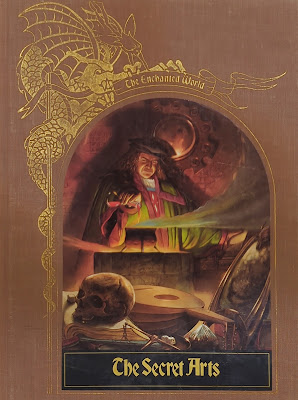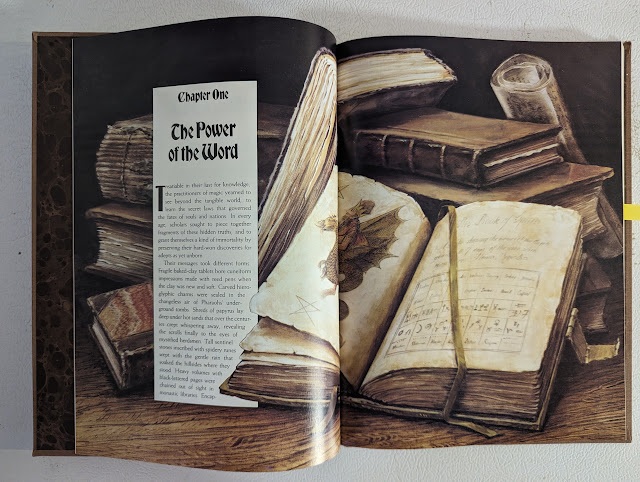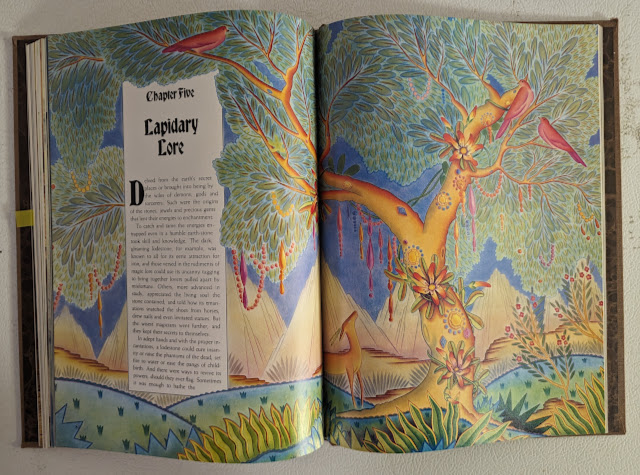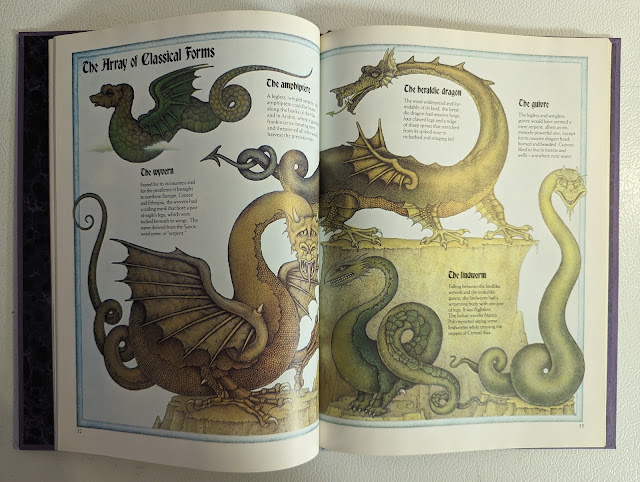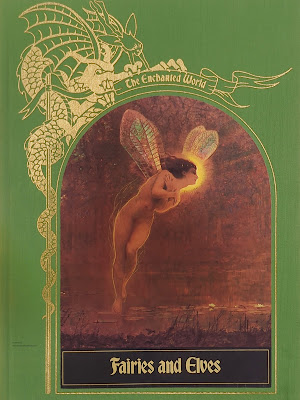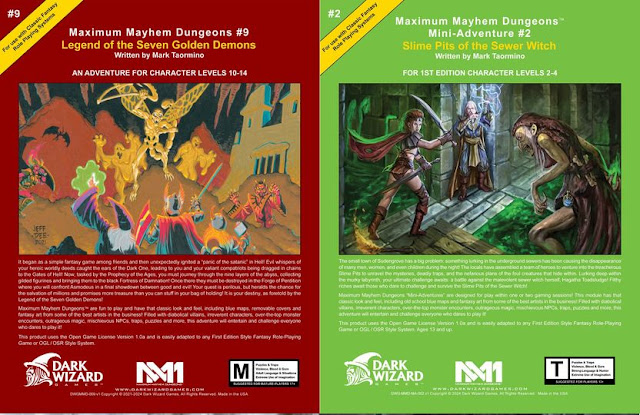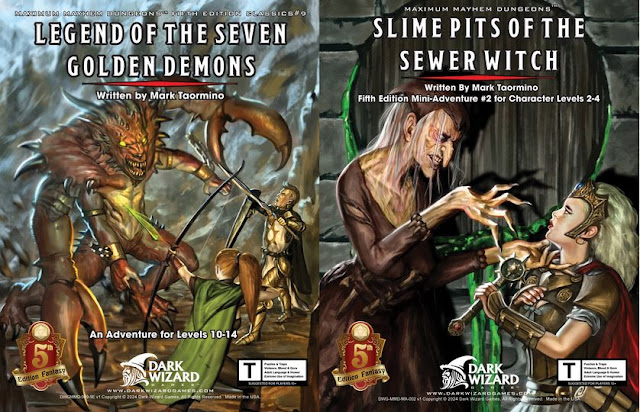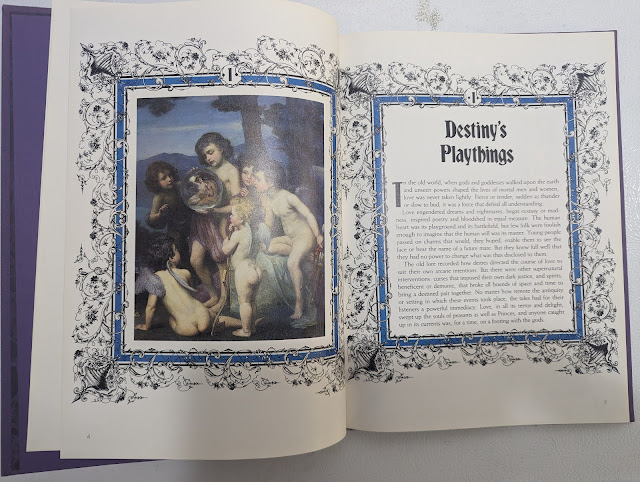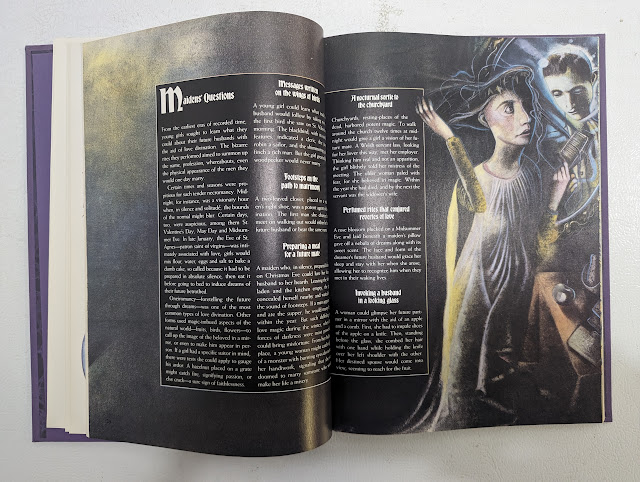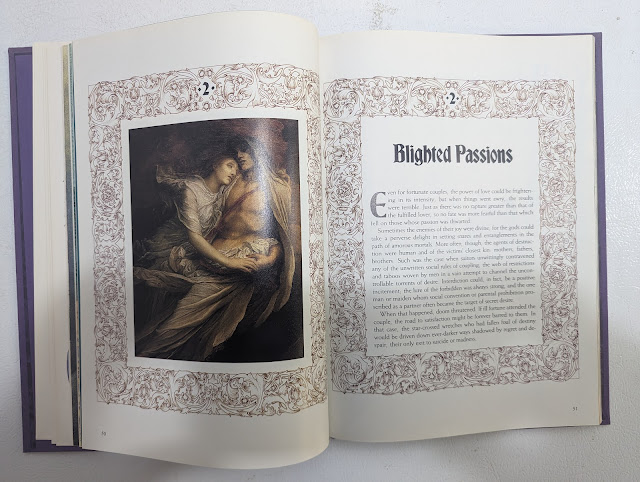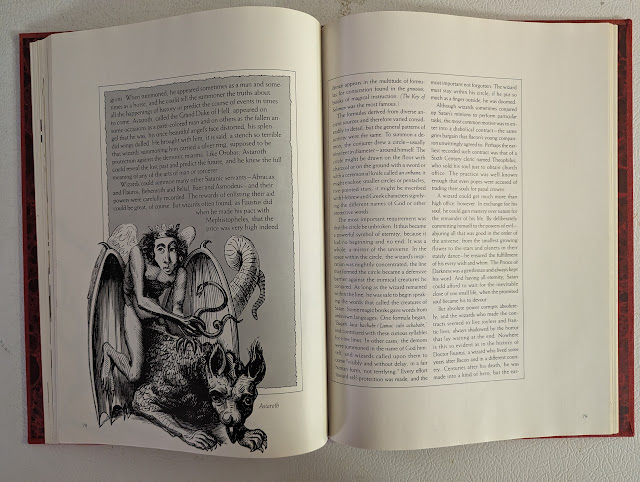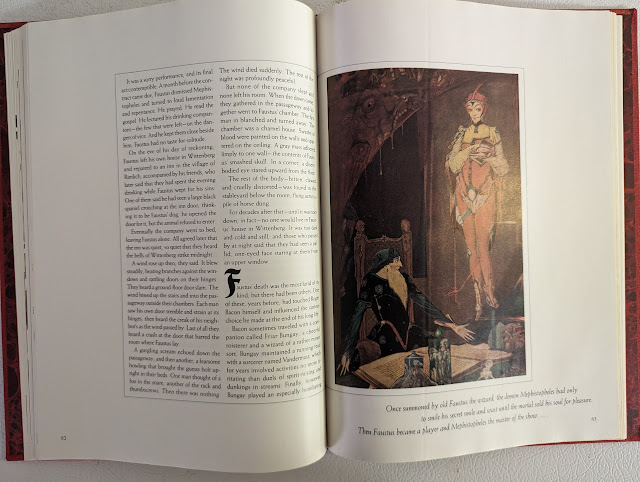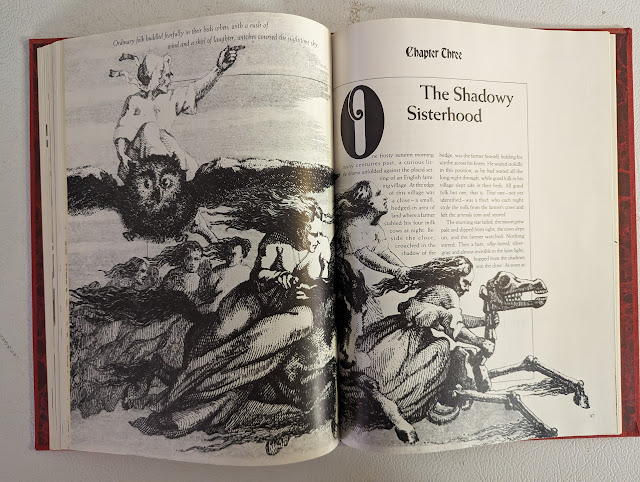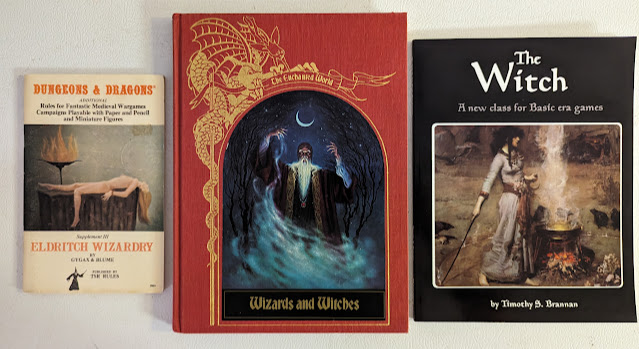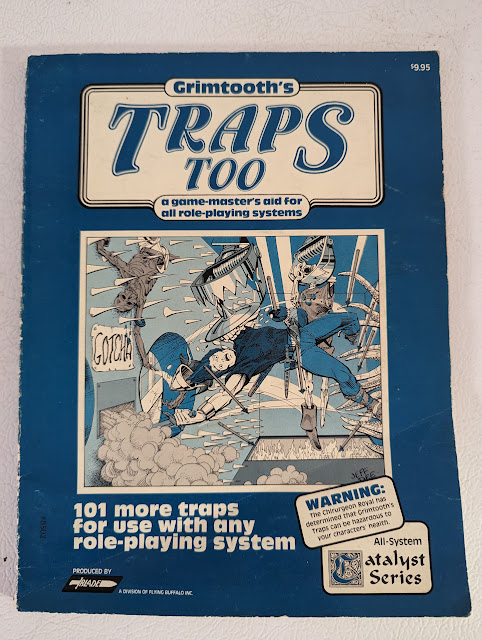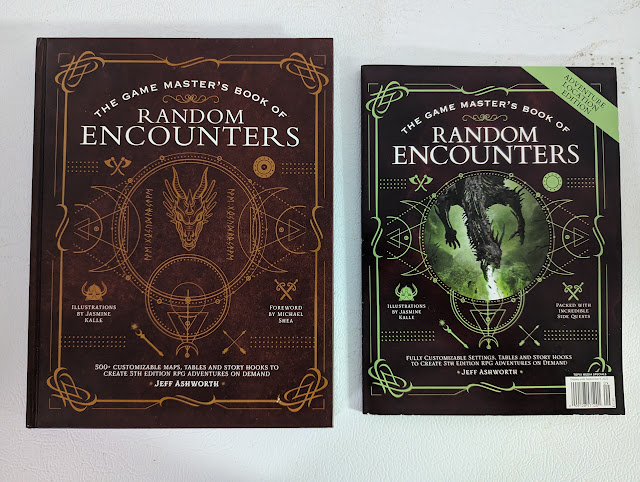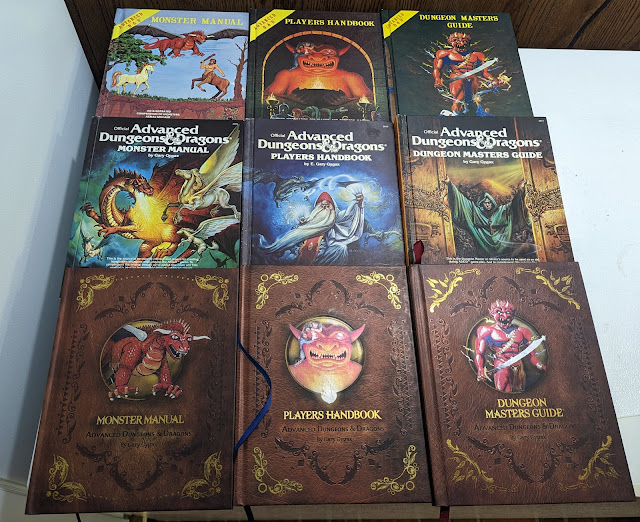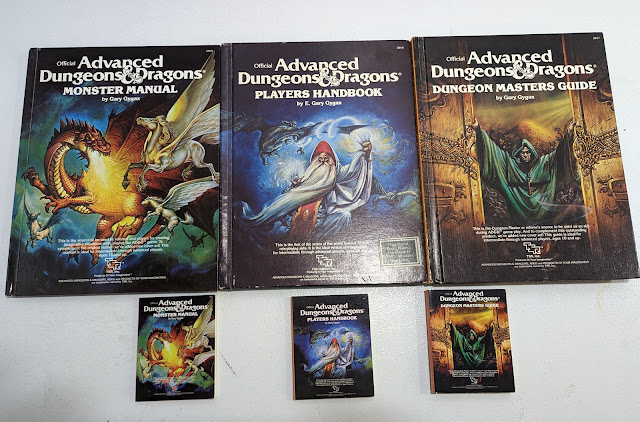Today is the Spring Equinox, an in-between time of light and dark, winter and summer—the perfect time to talk about Fairies and Elves. My reading of this has already been fruitful, with two more monsters added to my Basic Bestiary: the
Trollkönig and
Rübezahl. I am sure there are more to come. Many of the Faerie Lords you will find in my Basic Bestiary can also be found here, in one form or another. So let's get into it.
Fairies and Elves
by Editors of Time-LIFE Books, 1984 (144 pages)
ISBN 080945212X, 0809452138 (US Editions)
There is a certain Euro-centrism to this book and that is to be expected, though there are plenty of creatures that are similar to Elves and Fairies around the world. This gets better with other books and we saw this in the Wizards and Witches and the Lore of Love books.
Like all the books, this one is hardcover with canvas-like covering (this time green) illustrated by John Atkinson Grimshaw. This volume has four chapters. Also like all the books this one is lavishly illustrated with both new and classical pieces.
Chapter One: Lands Behind Enchantment's Veil
We are introduced to the worlds of the faeries and their myriad of names; the Daoine Side, the Tylwth Teg, and the Tuatha Dé Danann. Sometimes, they are also divided into camps of light and dark, like the Seelie and Unseelie or Liosálfar and Döckálfar. And all have multiple spellings. But all are immortal, or nearly so, and are members of a world long since gone by the time humans, or at least Christian humans, enter their lands. But for a time, a brief time the Fair Folk and humans could live side by side and these tales would enter into the legends of a later time.
Here, the fairies were more similar to humankind, with an air of regalness and otherworldliness, and of course, there were tales of their magic. One how the mere touch of the Queen of the Seelie court cured a young knight of his curse. Other tales on how trees would spring magical fruit or fountains of ale and wine.
Some lived on the land, but many lived under it or even under the sea like the chieftan O'Donoghue. These lands, regardless of where they were had the same otherworldliness about them.
A World in Miniature
The great peoples of the fairies reduced in nature and size, so when the lands they had lived in were settled, it was believed that they had shrunk and were living, somewhat literally, under our noses.
Chapter Two: Guardians of Field and Forest
Here, many different types of fairies are discussed, and we move further afield than just Northern Europe. We meet the changeable Leshy, who could grow from diminutive size to that of a giant. Sylphs, some as small as mice, would flit about in the air. Hobgoblins like Robin Goodfellow, also known as Puck, were tricksters, but others like Churn-milk Peg were malicious. Willow fairies from Czech legends were as common as German wood nymphs and the mountains of Rübezahl. Nearly every type of natural setting had a multitude of faeries of all shapes, sizes, and dispositions.
And that was the problem. Wander too far off into a fairies' home territory and one ran the risk of becoming lost and not finding their way home for years, if ever.
Not all faeries were human in appearance, either. The Kelpie was an underwater horse that drank the blood of swimmers, for example.
Others fit a theme. Russia's Father Frost was the lord of Winter, except in Denmark where that role was taken by the Snow Queen, and in Scotland it was the dreaded one-eyed hag, the Cailleac Bheur that ruled over winter and the cold.
All faeires were considered to be part of and guardian of their locales or area. From the dread three Faerie Lords and Ladies of Winter mentioned above to the tine Brown Man, who was content just to protect one small house.
The Myrtle Tree's Sweet Tenant
This is the tale of a dryad of the Myrtle tree and her love of a human prince, and the women who were jealous of her and the extent they would go. To match with the theme the tree from which the dryad came from was in the prince's palace courtyard. She would come to the young prince at night for lovemaking and disappear before sunrise. This infuriated the women he had been pledged too and must choose among them a wife. They stripped the leaves from her tree and broke of branches. Out came the dryad and the women turned on her, stabbing her and breaking her bones. The prince distraught, gathered the bark, the leaves, and the bones and tried to fix the myrtle tree, but could not. He stayed in his chambers, distraught. The rains came and new tree grew and when it had bloomed, the dryad stepped out again. The Prince married her and cast his former mistresses into his dungeons.
Chapter Three: Of Fairy Raids and Mortal Missteps
The last chapter had a happy ending, but that was not always the case when it came to fairy and human interaction. Princesses were abducted by fairy kings. Faerie maidens seduced otherwise virtuous knights, and faeries of all sorts made sport with the poor wives and daughters of locals. Sometimes though the mortals were the ones looking for trouble, stepping into faerie rings to become lost or seeking out their feasts, or, as in the case of the infamous Goblin Market, find their wares.
Faeries were notorious for stealing children, leaving ugly, mal-formed changelings in their place. Sometimes the babes could be found and rescued, other times, most times, they could not.
Tam Lin
It wasn't always the maidens that had to fear from the intentions of faeries, often mortal men were the target. Such was the case of Tam Lin the son of the Earl of Roxburgh. He had caught the eye of the Fairy Queen. He would have been lost forever had it not been for the courage, strength, and love of a mortal woman named Janet, who was able to turn Tam Lin away from the Fairy Queen.
Chapter Four: The Heart's Far-Carrying Call
Love between a mortal and faerie was never an easy path to take. Swan maidens could love a mortal, but only if the mortal hid their feather cloaks from them. Lamias craved the love mortal men, but equal craved the flesh of their children. Tales abound that if a mortal man ever struck his fairy bride she would leave him forever; maybe good advice for mortal brides as well!
Though not all tales ended bad, but all had a common theme; the road to true love is a hard one. We saw that in Lore of Love as well. Such is the next tale.
Trials of a Charmed Passion
Sir Launfal was a knight in King Arthur's court. By chance, one night, he spied a fairy lady of such beauty that all thoughts of mortal women left him. She also saw him and would visit him whenever he wished for her by name, Tryamour. The Queen, though, became jealous and asked him who it was that had given him so much happiness. He then insulted his Queen by saying she was not as beautiful as the fairy lady's lowest handmaiden. An insult, of course, and one that nearly got him burnt at the stake. But Tryamour comes to the court, and all agree that there is no way that Sir Launfal is lying or insulting. They ride off together, leaving the mortal world.
Again, like Wizards and Witches, the theme here is that once there was magic in the old world, but now it is gone. Though that theme is less overt here and more of a given. Faeries, creatures of magic, were once part of this world and now they are not.
Again the stories tend to bleed into each other and there is the feeling of half being told a story and half reading a factual account of things that had happened. The effect is an engrossing one.
It reflects what I have felt games like D&D have been missing. While yes, there is a Feywilde and lands of Faerie in many versions of the game, there is no real magic to them, if you know what I mean. There is nothing about them that brings them to life. There are few, if any, Faerie Lords and Ladies, and no reasons for them to do what they do. This is a book I'll come back to for more ideas and certainly more names and ways to use them.
Next time: Here there be Dragons! (for real this time)




